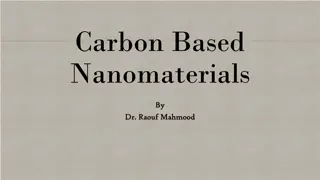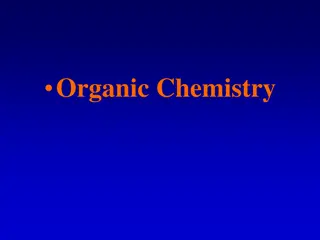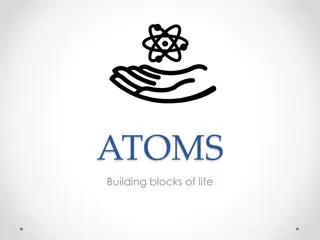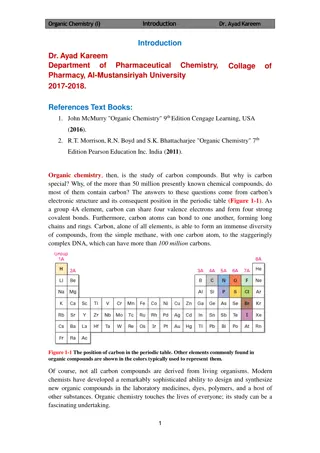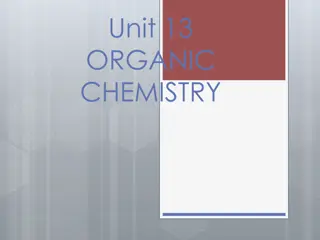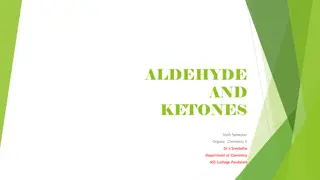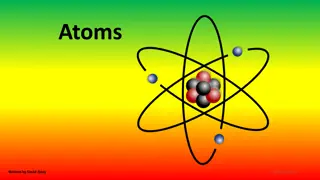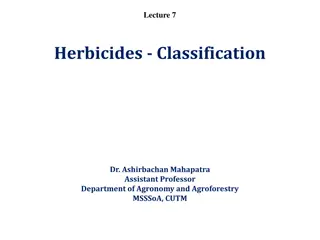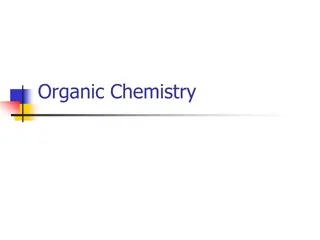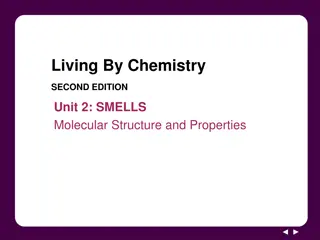Understanding Organic Chemistry: Carbon Atoms and Molecular Diversity
In organic chemistry, carbon atoms can form diverse molecules by bonding to four other atoms, leading to molecular complexity and diversity. The versatile nature of carbon allows for the formation of various carbon skeletons, contributing to the vast array of organic compounds. Hydrocarbons, consisting of carbon and hydrogen, are essential organic molecules found in petroleum and fat molecules. The formation of bonds with carbon and the molecular diversity arising from carbon skeletons are key concepts in organic chemistry.
Download Presentation

Please find below an Image/Link to download the presentation.
The content on the website is provided AS IS for your information and personal use only. It may not be sold, licensed, or shared on other websites without obtaining consent from the author. Download presentation by click this link. If you encounter any issues during the download, it is possible that the publisher has removed the file from their server.
E N D
Presentation Transcript
ORGANIC CHEMISTRY CARBON ATOMS CAN FORM DIVERSE MOLECULES BY BONDING TO FOUR OTHER ATOMS KAITLYN BEILERAND SIERRA GIRANDA
THE FORMATION OF BONDS WITH CARBON Carbon has 6 electrons total with 2 in the first electron shell and 4 in the second shell. Having 4 valence electrons in a shell that holds 8, carbon would have to donate or accept 4 electrons to complete its valence shell and become an ion.
When carbon forms four single covalent bonds, the arrangement of its four hybrid orbitals causes the bonds to angle toward the corners of an imaginary tetrahedron. When two carbon atoms are joined by a double bond, all bonds around those carbons are in the same plane.
Oxygen, hydrogen, carbon, and nitrogen are the four major components of organic molecules and are the basis for the rules of covalent bonding in organic chemistry. A carbon atom can also use one or more valence electrons to form covalent bonds to other carbon atoms, linking the atoms into chains of seemingly infinite variety.
MOLECULAR DIVERSITY ARISING FROM VARIATION IN CARBON SKELETONS Carbon chains form the skeletons of most organic molecules. Skeletons vary in length and may be straight, branched, arranged in close rings, and may vary in location and number. Carbon skeletons are one important source of the molecular complexity and diversity that characterize living matter.
HYDROCARBONS Hydrocarbons are organic molecules consisting of only carbon and hydrogen. Hydrocarbons are the major components of petroleum, which is called a fossil fuel because it consists of the partially decomposed remains of organisms that lived long ago. Fat molecules have long hydrocarbon tails attached to a non- hydrocarbon component. Hydrocarbons undergo reactions that release a relatively large amount of energy. The gasoline that fuels a car consists of hydrocarbons and the hydrocarbon tails of fat molecules serve as stored fuel for animal bodies.
ISOMERSCOMPOUNDS THAT HAVE THE SAME UMBER OF ATOMS OF THE SAME ELEMENTS BUT DIFFERENT STRUCTURES AND HENCE DIFFERENT PROPERTIES Three types: structural isomers, geometric isomers, and enantiomers.
STRUCTURAL ISOMERS Differ in the covalent arrangements of their atoms and location of double bonds Image result for structural isomers pearson
GEOMETRIC ISOMERS Have the same covalent partnerships, but they differ in their spatial arrangements Differences arise from inflexibility of double bonds Single bonds allow atoms to rotate freely without changing the compound, double bonds do not. Subtle difference in shape can dramatically affect biological activities of organic molecules
ENANTIOMERS --Isomers that are mirror images of each other Designated the L (Latin for left) and D (Latin for right) isomers. In a way, enantiomers are the left-handed and right-handed versions of molecules Concept important in pharmaceutical industry because two enantiomers of a drug may not be equally effective or can produce harmful effects E.g. Thalidomide drug prescribed to women in the late 1950s Demonstrates the sensitivity of organisms to variations in molecular architecture




